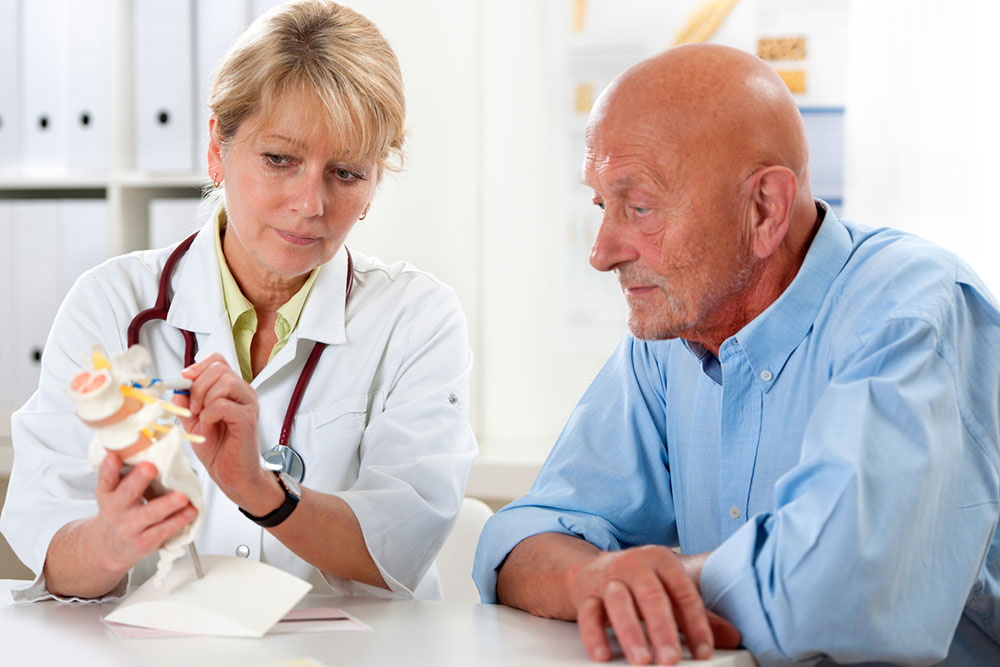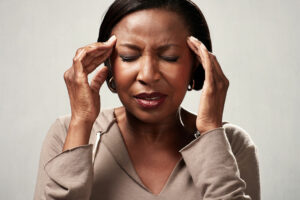Signs of spinal stenosis and its therapies

Spinal stenosis occurs when the spinal canal becomes too narrow, exerting pressure on the spinal cord and the nerves traveling through the spine. It usually occurs in the neck and the lower back. Some people may have no symptoms, while others may experience signs that aggravate over time. Typically, spinal stenosis results from wear-and-tear in the spine caused by arthritis. Here are the symptoms and the treatment for spinal stenosis.
Symptoms
Depending on the severity and location, you might experience weakness, tingling, pain, or numbness in your feet, hands, legs, arms, neck, or back.
As spinal stenosis develops gradually, the symptoms may not appear even if the condition is noted in imaging tests or X-rays. Moreover, the symptoms may come and go and affect people differently.
Lumbar spinal stenosis symptoms
If one is diagnosed with lumbar spinal stenosis, one may have the following symptoms:
Pain that decreases when you sit, walk uphill, or lean forward
Aggravated pain on walking, standing for a long duration, or walking uphill
Pain in the lower back
Pain starts in the buttocks and travels down the leg and foot
Tingling sensation or numbness in the foot, leg, or buttocks
Heavy feeling in the legs that results in cramping in one or both legs
Cervical spinal stenosis symptoms
If one is diagnosed with cervical spinal stenosis, one may have the following symptoms:
Decreased hand function, like experiencing issues when buttoning shirts or writing
Balance problems
Clumsiness, weakness, tingling, or numbness in the foot, leg, hand, or arm
Neck pain
Treatment
Typically, the treatment depends on the symptoms. Some prevalent courses of treatment include the following:
Physical therapy to stretch and strengthen the muscles
Specific hormone injections into the spine to lower swelling
A short hormone course to lower inflammation
NSAIDs to ease pain
Other treatment options if experiencing nerve pain
The doctor may advise surgery if the weakness or pain is severe and other treatments do not show results. However, most people can see improvements with nonsurgical options.
Complementary therapy or home remedies
One can also try certain home remedies and therapies after consulting with a spine specialist.
Cold therapy, wherein you apply an ice pack on swollen areas to relieve pain and swelling
Heat therapy, wherein you use a warm towel or heating pad to relax stiff muscles
Acupuncture
Yoga
Massage
Physical therapy and exercise for spinal stenosis
Exercise can also help with spinal stenosis management. However, before starting anything, consult your physical therapist to ensure it is safe. Some activities you can indulge in are:
Some yoga moves, like a cat-cow or a child’s pose
Short walks
Using a stationary bike
Swimming
Surgery
A doctor may recommend surgery if the condition hinders your ability to perform everyday activities, control the bladder or bowel, or walk.
Some commonly recommended surgeries are:
Laminectomy
The surgeon removes a part of the vertebrae to give space to the nerves.
Foraminotomy
The procedure is used to widen the foramen.
Spinal fusion
Metal implants or bone grafts are employed to annex affected spine and bones.



